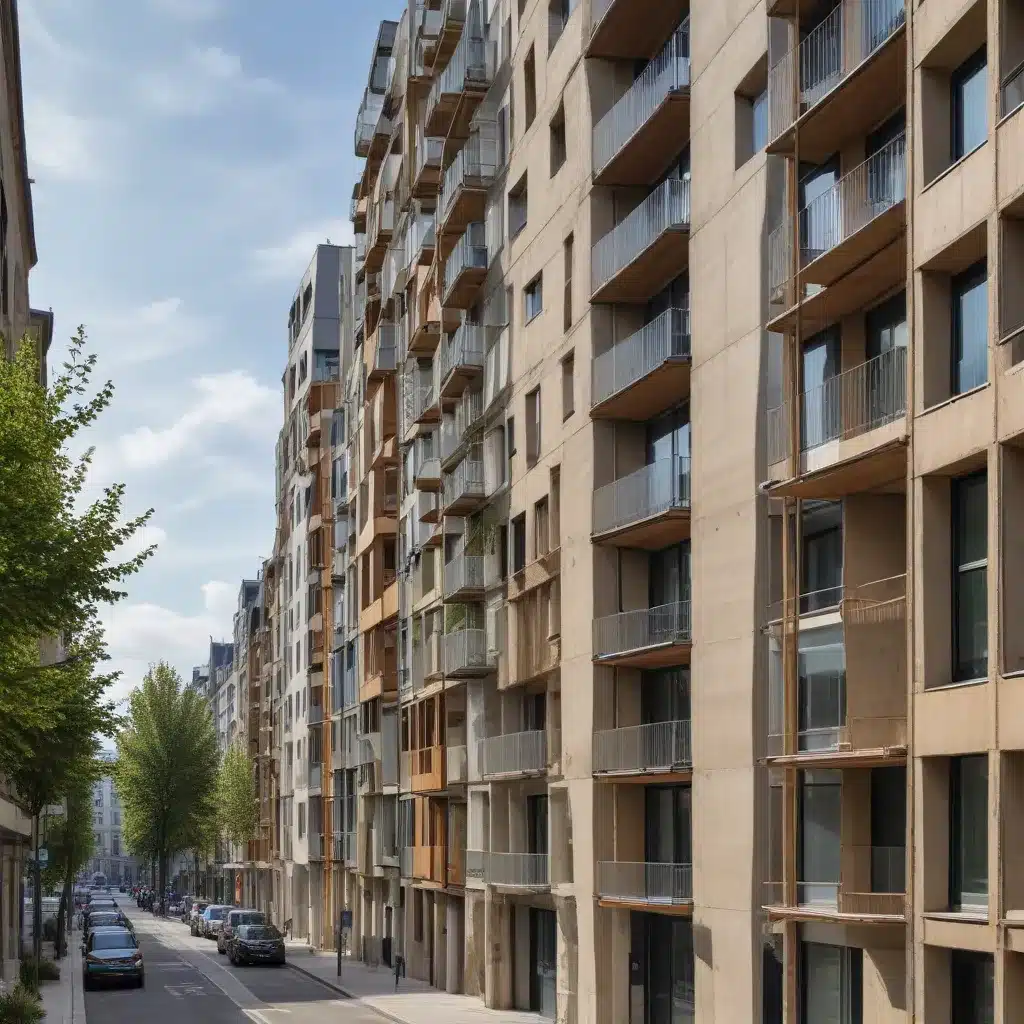
Regulatory Challenges and Policy Frameworks for Sustainable Architecture in Europe
As the world grapples with the urgent need to mitigate climate change, the construction industry has emerged as a critical battleground. Responsible for nearly 40% of global carbon emissions, the built environment presents both a significant challenge and an immense opportunity in Europe’s transition to a sustainable future. Fortunately, a growing number of policymakers, developers, and concerned citizens are rising to the occasion, driving innovative regulatory frameworks and design principles that are redefining the future of architecture across the continent.
Sustainability Standards and Certifications
At the forefront of this movement are comprehensive sustainability standards and green building certifications that are transforming the way structures are designed, constructed, and operated. Programs like the EU’s Level(s) framework, BREEAM, and LEED have become de facto benchmarks, setting stringent performance targets for everything from energy efficiency and water usage to waste management and indoor air quality. These rigorous certification schemes not only incentivize sustainable practices but also provide a common language and set of best practices that are driving change across the industry.
Equally important are the emerging regulatory frameworks that enshrine these principles into law. The Energy Performance of Buildings Directive (EPBD), for instance, mandates that all new buildings in the EU must be nearly zero-energy by 2021, while existing structures are required to undergo deep energy retrofits. Complementing this are national and local policies, such as Denmark’s ambitious goal of achieving carbon neutrality in the built environment by 2050 and the Netherlands’ circular economy initiative, which aims to eliminate waste and maximize the reuse of materials.
Building Codes and Energy Efficiency Regulations
Underpinning these broader sustainability frameworks are increasingly robust building codes and energy efficiency regulations that govern the technical specifications and performance standards for individual structures. The International Energy Conservation Code (IECC), for example, has been widely adopted across Europe, setting minimum requirements for insulation, windows, lighting, and HVAC systems. Similarly, the EU’s Ecodesign Directive mandates energy efficiency standards for a wide range of household and industrial appliances, helping to reduce the operational carbon footprint of buildings.
These regulatory efforts are further bolstered by innovative financing mechanisms, such as green bonds and energy efficiency mortgages, which provide developers and homeowners with the capital to invest in sustainable upgrades. Coupled with the growing availability of renewable energy and energy storage technologies, these policy tools are helping to redefine the economics of sustainable architecture, making it an increasingly viable and attractive proposition for developers and end-users alike.
Local Policy Initiatives
While national and supranational frameworks set the overall direction, some of the most impactful sustainability initiatives are taking place at the local level. Cities across Europe, from Amsterdam to Berlin to Barcelona, are pioneering ambitious urban planning strategies that prioritize walkability, bike-friendly infrastructure, and transit-oriented development. These compact, mixed-use communities not only reduce reliance on personal vehicles but also foster a more vibrant, livable urban environment.
Furthermore, many municipalities are leading the charge on renewable energy deployment, with initiatives like rooftop solar photovoltaic programs and district heating networks that leverage geothermal, biomass, and waste heat. In addition, innovative zoning codes and building permit requirements are driving the adoption of passive design principles, green roofs, and urban greening solutions, which enhance climate resilience and improve quality of life for residents.
Sustainable Design Principles
Underpinning these regulatory frameworks are a set of sustainable design principles that are reshaping the built environment. Passive design strategies, such as optimal building orientation, natural ventilation, and high-performance insulation, are reducing energy demands without compromising occupant comfort. The integration of renewable energy technologies, from rooftop solar to building-integrated wind turbines, is helping to decarbonize the operational phase of a structure’s life cycle.
Equally important is the growing emphasis on circularity and material reuse, where the waste generated during construction and demolition is minimized, and building components are designed for disassembly and repurposing. This circular economy approach not only reduces the environmental impact of the built environment but also presents a significant economic opportunity, as new business models emerge around the reuse and recycling of building materials.
Stakeholder Collaboration
Realizing the full potential of sustainable architecture, however, requires close collaboration among a diverse array of stakeholders. Public-private partnerships between government agencies, developers, and community groups are crucial for aligning incentives, pooling resources, and ensuring that sustainable design solutions are tailored to local needs and preferences. Innovative financing mechanisms, such as green bonds and energy performance contracts, are also facilitating the large-scale deployment of sustainable technologies, while community engagement initiatives are empowering residents to become active participants in the design and stewardship of their built environment.
Technological Innovations
Underpinning these collaborative efforts are a host of technological innovations that are transforming the way buildings are conceived, constructed, and operated. Building Information Modeling (BIM) platforms, for instance, are enabling designers and engineers to simulate the energy performance, material flows, and construction logistics of a building long before the first shovel hits the ground. Meanwhile, smart building technologies, such as integrated sensors, energy management systems, and predictive maintenance algorithms, are optimizing the day-to-day performance of structures, further reducing their environmental footprint.
Beyond these digital tools, prefabrication and modular construction techniques are streamlining the construction process, improving quality control, and minimizing waste. These offsite manufacturing methods, combined with advancements in materials science and 3D printing, are giving rise to a new generation of high-performance, low-carbon building components that are reshaping the architectural landscape.
As Europe continues to refine its regulatory frameworks and embrace innovative design principles, the future of sustainable architecture is taking shape. By harnessing the power of policy, technology, and cross-sector collaboration, the continent is positioning itself as a global leader in the quest for a more resilient, resource-efficient, and livable built environment. The challenges are significant, but the potential rewards are immense, not only for the planet but also for the communities that will reap the benefits of this sustainable transformation.







